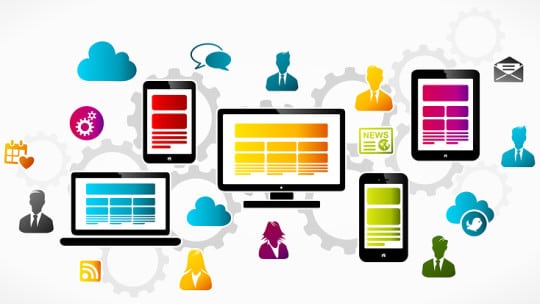
We live in a mobile world, so mobility is ubiquitous, right? Not so fast. While it’s true that many things are done via mobile apps, it’s not been the case with internal communications (IC). Even some top-flight technology companies are only just now introducing mobility to their intranets via smartphone apps in response to employee demand.
Part of this is due to high and diverse demands placed on IC. Something has to fall lower on the priority list. “The pressure seems greater than ever [in IC]. Everyone seems to want an internal communicator…everyone wants a video,” said Leigh Woisard, SVP, corporate communications and public affairs, Cox Communications. Like other business units, IC can respond only to a limited number of demands. Yet it’s proven to be so capable, IC “might become a victim of its own success” in that it has to respond “no” so often to stakeholders, she said at an Association of Cable Communicators roundtable.
But back to intranets, from a cost perspective, [mobility] “is one of the toughest aspects of IC [for small and midsize brands]. Setting up [a mobile capability for a corporate intranet] for a company of 200 costs the same as if you were setting it up for a company of 20,000,” said Michael Rudnick, managing partner, Prescient Digital Media.
Back of the Line for IC Tech
In general IC often is near the bottom of the priority list when it comes to tech updates. IC tech tends to be looked at only before big events, such as a merger or a product rollout. Yet “how do you get people [particularly millennials] to take you seriously” if your IC lacks a mobility component? “Everyone wants everything to be mobile today,” Rudnick adds.
Comcast, the nation’s largest internet and cable provider, only recently added mobility to its IC as part of a relaunch of its intranet. As such, responsive design, where designers aim to provide an optimal experience across a range of devices, including desktop monitors to mobile phones, was important, said Liesl Henderson, Comcast Corp.’s senior director for IC.
The most difficult part of the Comcast intranet rollout was balancing stakeholder demands with budget, security and legal realities, Henderson adds. “Everyone wants a button on the intranet and the home page…it really was an adventure…we had to say ‘no’ to some requests,” she said.
On the positive side, Comcast’s new intranet is much “clearer and better organized” than its overloaded predecessor, although there’s still at least one issue ahead. “Our challenge now is with social…I don’t think we’ll move to a single [social] tool…there are so many tools out there and people use them for good reasons.”
An issue facing IC pros with healthy technology budgets is deciding which tools to purchase. With large companies there often are multiple constituencies, some of which champion rival tools. IT wants one technology, employees favor another, the C-suite a third. And then there’s the shiny, new toy syndrome. “Don’t buy a technology just because it’s the latest thing. Look at your business goals, be strategic and thoughtful” before purchasing, he said. And keep an eye out for chatbots. Eventually, instead of finding the right website to see how how much vacation time you have left, you’ll ask your screen vocally and get a Siri-like answer.
Yet should IC be perceived as slow-moving or that “it’s asking too many questions,” employees will push out messages, which may be incorrect, on their own. Adds Woisard, “Employees are no longer sitting at their desks waiting for us to communicate to them.”
Some intranet issues are similar to what IC pros are grappling with daily. “We’re the gatekeepers...it’s part of our job to apply filters...employees are deluged with information...our main goal is delivering the business message” to employees, Henderson said. Woisard agrees. “Having too many messages out there causes confusion...How do we change behavior? That’s what we really want to know.”
As with external PR, the subject of measurement is never far from PR pros’ minds. “Data is your friend,” Woisard said, “you need to measure” what messages are being read. Cox uses a tool that allows IC to see what email messages employees open, she said.
Despite the plethora of technologies, Woisard noted her brand still gathers employees regularly with senior executives for coffee. “Every demand made during those coffees is documented [by IC] and sent to the C-suite,” she said. “It’s back-to-basics but it’s important.”
